-
ADP Workforce Now: Best all-in-one HR solution
-
Crunchr People Analytics: Best comprehensive data integration
-
Qualtrics People Analytics: Best for employee engagement
-
DreamTeam: Best free plan option
-
Tableau: Best for DEI analytics
-
Visier: Best for actionable insights
-
ChartHop: Best insights for people managers
-
IntelliHR: Best for built-in performance reviews
-
Sisense HR: Best for measuring employee experience
Most business leaders understand the importance of using data to drive decision-making. Companies crunch the numbers to make major strategic decisions all the time. They look at forecasted demand, sales revenue, supply costs, customer retention rates and other key metrics to analyze the business’ performance and make relevant decisions.
SEE: We’ve rounded up the best HRIS tools for small businesses.
This same concept can apply to HR decisions too. Businesses have access to a large amount of meaningful employee data that they can use to analyze performance, make better decisions, and identify gaps or weaknesses. However, most organizations don’t track or analyze this data enough to extract actionable insights. That’s where HR analytics software can help.
This article will take you through the top HR people analytics software options that can help you better utilize your employee data.
Jump to:
- Best HR analytics software: Feature comparison table
- Best HR analytics tools and software
- Key features of HR analytics software
- Methodology
- How can you choose the right HR analytics software for your business?
Best HR analytics software: Feature comparison table
| ADP Workforce Now | Crunchr | Qualtrics | DreamTeam | Tableau | Visier | |
|---|---|---|---|---|---|---|
| Customizable reporting dashboards | Yes | Yes | Yes | Yes | Yes | Yes |
| Built-in employee surveys | Yes | Yes | Yes | Yes | No | Yes |
| Free plan option | No | No | No | Yes | No | No |
| 24/7 customer service | No | No | No | No | No | No |
| Starting monthly price | Custom pricing only | Custom pricing only | Custom pricing only | $0 | $15/user | Custom pricing only |
Best HR analytics tools and software
We curated our HR software list of the nine best HR analytics tools based on popularity, customer reviews and features.
ADP Workforce Now: Best all-in-one HR solution
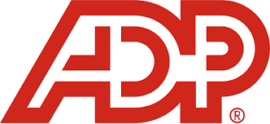
ADP is a top payroll and HR solution for companies across the globe. ADP Workforce Now is its all-in-one human resource suite that bundles talent management, employee benefits, time tracking, payroll, HR tools and extensive reporting features in one platform. The software relies on ADP’s data product, ADP DataCloud, to generate extremely thorough, real-time insights into your workforce.
ADP DataCloud is particularly helpful when it comes to generating comparative data. For instance, ADP’s software lets you compare your company’s metrics to standard industry benchmarks so you can stay competitive in your industry. It also juxtaposes HCM data with financial data to help you make smarter fiscal decisions in terms of hiring and business operations.
The reporting software’s real-time updates combined with its forecasting ability help business owners make proactive decisions that can minimize turnover, identify top talent and more.
Pricing
While ADP doesn’t list its pricing online, ADP Workforce Now has three plans with varying levels of HR and payroll features:
- The Essential plan includes straightforward payroll and HR management.
- The Enhanced plan includes employee benefits management.
- The Premium plan includes thorough workforce management and an automated time-tracking tool.
Features
- All-in-one HR, payroll and compliance software.
- Comparative industry metrics.
- Predictive analytics.
- Easily customizable reporting dashboards.
| Pros | Cons |
|---|---|
|
|
Learn more by reading our ADP software review.
Crunchr People Analytics: Best comprehensive data integration

HR data is often scattered across different software platforms, making it hard for businesses to get the full picture. Crunchr People Analytics condenses HR data from all of the company’s different HR systems such as applicant tracking systems, HRIS systems, payroll softwares and more into one convenient analytics platform. This makes it easier to analyze the data and extract meaningful insights from it.
Crunchr provides a large number of pre-built dashboards which makes the software easy for new users to get comfortable with. However, the HR analytics dashboards are completely customizable, so users can build their own dashboards to showcase the information that is most relevant to their needs. Users can also easily download and share reports.
SEE: Feature comparison: Time tracking software and systems (TechRepublic Premium)
Pricing
Crunchr doesn’t list its pricing online. Contact its sales team to request a quote and book a demo.
Features
- Large number of dashboard templates.
- Customizable HR dashboards.
- Novel workforce planning tools.
- Workforce strategic planning “Wizard.”
| Pros | Cons |
|---|---|
|
|
Qualtrics People Analytics: Best for employee engagement
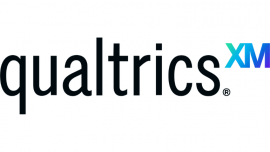
Qualtrics People Analytics software allows businesses to better utilize their HR data to get a clearer view of their workforce and understand what’s driving performance. Qualtrics is best known for its survey software, but its People Analytics software is also well-rated. It also leverages the vendor’s surveying abilities to offer employee survey tools that go beyond the basic employee engagement survey templates (Figure A).
Figure A

One unique survey option is to survey employees on their benefits to find out what they like and where they want the benefits offerings expanded. This is a great way to improve your open enrollment process through analytics.
One other major benefit of Qualtrics’ HR analytics solution is that it provides highly actionable information. For example, Qualtrics can provide analysis to show how employee engagement fluctuates throughout the employee lifecycle at your company. The platform can also help identify factors that may be impacting engagement at different points in the employee lifecycle.
Pricing
Pricing is customized per contract, but third-party reviews suggest $1,500 per year is an approximate estimate for the Core 1 package.
Features
- Versatile dashboarding and statistical analysis.
- Analytics for every stage of the employee lifecycle.
- Unique employee engagement insights.
| Pros | Cons |
|---|---|
|
|
DreamTeam: Best free plan option
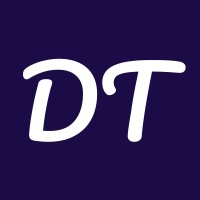
DreamTeam is a recruiting-focused HR analytics software. It creates customizable HR analytics dashboards with information populated from your applicant tracking system. Users can choose between dashboard templates or create their own.
SEE: Find out which HR software solutions have the best ratings and reviews in 2023.
Recruiters and HR departments can use DreamTeam to clearly showcase the impact of their work to company leadership. KPIs such as time to fill, time to hire, hires made, and offer acceptance rates can showcase the efficiency and performance of the recruiting team.
Users can also view the applicant withdrawal rate and reason for withdrawals so that the company can understand where it is losing candidates. This data is useful and actionable. Applicants tend to lose interest if too much time has passed, so tracking time to hire rates and applicant withdrawals can help businesses make sure that they are not taking too long and losing top candidates.
Pricing
DreamTeam has two HR software analytics plans, including a free plan:
- Free costs $0 and is available for companies with up to 100 employees.
- Premium costs $4 per employee per month and is available for companies with over 100 employees.
Features
- Candidate surveys.
- Employee directory and organization chart.
- Automated onboarding software.
| Pros | Cons |
|---|---|
|
|
Tableau: Best for DEI analytics
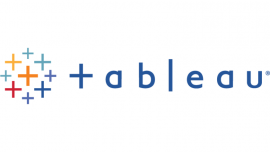
Tableau is one of the most popular business intelligence software tools with solutions that address a wide range of business uses. Tableau’s human resources analytics solution leverages powerful, intuitive analytics to provide business leaders with valuable insights on compensation, diversity and inclusion, employee retention, recruiting and more (Figure B).
Figure B
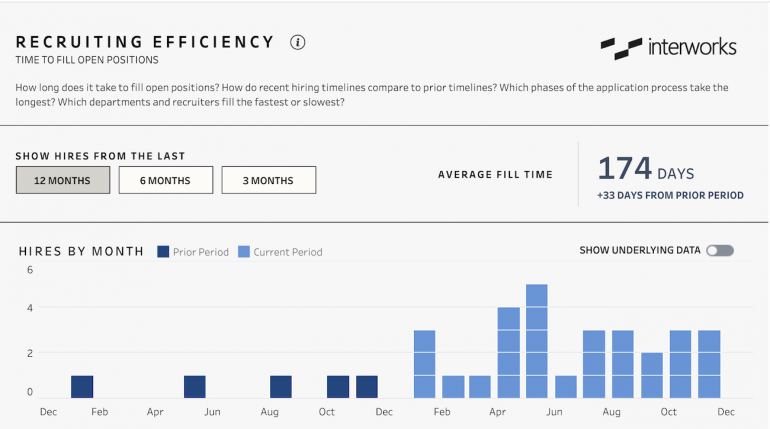
Many large companies and universities use Tableau to track and publish diversity data with the DE&I HR dashboard. Keeping a close eye on this data can help organizations identify gaps in their candidate pools and workforce. If businesses find that they are lacking diversity in a certain area, it may be that they are not reaching candidates in certain demographics or that implicit bias from the hiring manager is impacting new hire diversity. The job application process funnel dashboard can also be used to identify gaps or ways to improve the recruiting process.
There are multiple dashboards available that employers can use to boost employee retention through the use of analytics. The employee turnover dashboard, employee attrition analysis dashboard and employee feedback survey analysis tools can all help businesses identify factors that may be hurting engagement and contributing to turnover.
Pricing
Tableau has three plans:
- Tableau Viewer starts at $15 per user per month and includes multiple analytics dashboards.
- Tableau Explorer starts at $42 per user per month and adds self-service analytics.
- Tableau Creator starts at $70 per user per month and offers thorough reporting and analytics.
Features
- Ability to track diversity data.
- Numerous dashboard tools and options.
- Employee feedback survey analysis tools.
| Pros | Cons |
|---|---|
|
|
Visier: Best for actionable insights
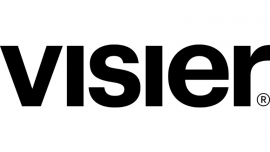
Visier offers robust people analytics tools. Visier uses AI to analyze the organization’s HR data and extract actionable insights and recommendations. The platform also helps businesses take action based on these insights by creating action plans.
Visier can provide analytics that address a wide range of HR concerns. One of the most relevant analytics tools in today’s labor market is the predictive analytics that analyze an employee’s risk of exit. Visier can analyze HR and payroll data along with the last two years of the employees’ history to predict when an employee is most likely to resign. This allows managers to get ahead of the issue and work harder to retain the at-risk employees.
Visier can also create career roadmaps to showcase how employees can advance within the organization. This feature maps out the employee’s internal job history and uses it to suggest potential future paths that can help facilitate workforce planning as well as conversations about advancement.
Predictive analytics can also be used to identify which employees are best-suited for a promotion based on their employee history. This is a great tool for ensuring that no employees are being overlooked.
Pricing
Visier doesn’t list its pricing online.
Features
- Robust people analytics.
- AI-powered HR analytics system.
- Predictive analytics for employee exit risk.
- Ability to create employee career roadmap.
| Pros | Cons |
|---|---|
|
|
ChartHop: Best insights for people managers

ChartHop is an HR analytics platform that is relatively new but has emerged as one of the more popular platforms for people analytics, ChartHop offers user-friendly dashboards and reporting tools that showcase HR analytics in a visual format. It is great for racking metrics over time on easy-to-understand charts and graphs.
ChartHop isn’t just for the HR department. All people managers within the organization can benefit from the real-time reporting features and performance management functions offered by ChartHop. Managers can complete 1:1 feedback forms to send feedback directly to team members to facilitate clearer and more frequent communication around performance.
In addition to analyzing the organization’s existing data, ChartHop can also be used to collect new data from employees through customizable surveys. Employers can send out employee engagement surveys through the platform. ChartHop can then be used to measure the employee engagement data collected against other metrics such as performance, turnover or compensation.
Pricing
ChartHop has a free plan for companies with up to 150 employees. It has two additional paid plans:
- ChartHop Standard starts at $8 per employee per month.
- ChartHop Premium starts at $16 per employee per month.
Features
- Real-time reporting features
- Customizable surveys
- DEI dashboards
- Optional add-ons including compensation and performance reviews
| Pros | Cons |
|---|---|
|
|
IntelliHR: Best for built-in performance reviews

IntelliHR is a highly-rated people management and analytics software that emphasizes performance management and employee engagement. The platform centralizes the company’s HR data and provides valuable analytics and reporting functions to help businesses leverage the data better (Figure C).
Figure C
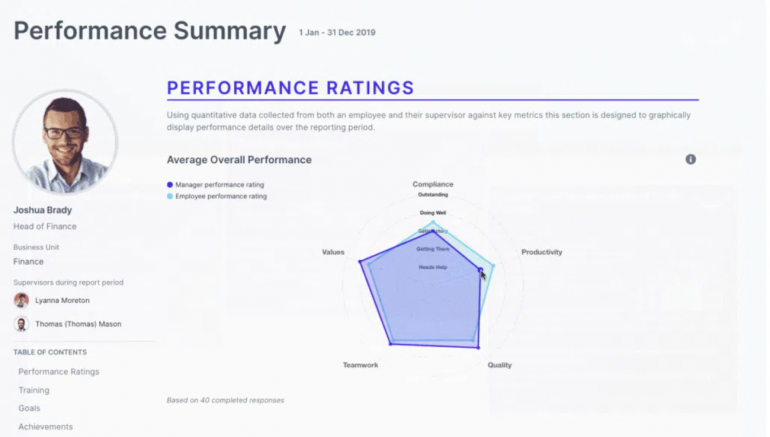
With IntelliHR’s software, data is displayed in a visual and interactive manner. This allows even non-technical staff to easily absorb the information with a quick glance. The software includes detailed reporting on employee engagement metrics and employers can collect additional data by sending out employee pulse surveys.
There are a wide range of analytics available, including workforce planning and financial analytics. Employers can view their current headcount, recruitment statistics, turnover data and more.
IntelliHR also provides analytics and reporting on compliance issues. Employers can generate reports to track training, qualifications and various legal compliance issues. This is helpful for businesses in more heavily regulated fields where continuing education, safety training or occupational licensing is required.
Pricing
IntelliHR has multiple plans:
- Engagement starts at $3.60 per employee per month
- Performance starts at $6 per employee per month
- Strategic starts at $9 per employee per month
- Enterprise requires custom pricing only
Features
- Employee pulse surveys
- Range of analytics and data views
- Analytics and reporting on compliance
- Recruitment analytics tools
| Pros | Cons |
|---|---|
|
|
Sisense HR: Best for measuring employee experience

Sisense is a leading business intelligence tool that offers solutions for a wide range of business activities. Sisense HR provides in-depth reporting and analytics based on a company’s workforce data. This data can be used to better understand trends within your workforce related to employee turnover, engagement and more.
The software offers a number of dashboards designed to address specific HR concerns. The employee performance dashboard compiles data on employees’ quarterly performance scores, overtime worked, levels of absenteeism, and other relevant metrics to provide in-depth analysis and comparisons. The Employee Turnover dashboard can be used to analyze how different factors may influence employee turnover. Users can also customize these dashboards or build their own to identify different data trends and correlations.
Pricing
Sisense HR doesn’t list its pricing online.
Features
- Employee turnover analytics.
- Code-based customizable workflows.
| Pros | Cons |
|---|---|
|
|
Key features of HR analytics software
HR analytics software allows businesses to utilize their workforce data to improve decision-making. Most HR analytics software includes specialized tools and reporting features that businesses can use to address specific HR concerns such as employee engagement, turnover and performance.
Third-party integration
Using an HR people analytics software can help businesses centralize all of their HR data into one platform for more comprehensive data analysis. Many HR analytics software tools integrate with CMS, ATS, HCM, payroll and other software to centralize relevant data.
Reporting and analytics dashboards
Users can view key HR metrics in an easy-to-digest format. Many of these dashboards include data visualization tools to map out the data on a chart or graph to make it easier for less number-savvy staff to understand.
These dashboards can showcase a variety of data types and are generally customizable. Most vendors offer templates or pre-built dashboards around the most common HR analytics concerns such as employee turnover, performance metrics, DEI and recruiting. These dashboards are a great way to quickly access HR data and share important metrics with other internal stakeholders in a clear visual format.
Employee surveys
HR analytics tools often facilitate data collection through employee surveys. Many offer templates for common survey types such as employee engagement surveys. These surveys can easily be sent out digitally and are designed to be quick and user-friendly for the employee. These surveys can also be used to collect feedback on employee benefits before open enrollment, survey candidates or request anonymous feedback on workplace issues.
Trend analysis
These analytics software solutions can help employers identify and unpack trends within their data. This can include dips in engagement at different points in the employee lifecycle, reasons that candidates lose interest, compensation trends and more.
Many HR analytics software programs use AI to analyze these trends and offer recommendations. This lets employees take action on the analytics data without spending hours sifting through numbers to find the relevant data trends.
Performance management
Performance management revolves heavily around data. Attendance data, productivity or sales scores, performance review ratings and other performance metrics can be great sources of data to analyze. HR Analytics software can identify performance trends, knowledge gaps and facilitate manager feedback.
Predictive analytics
Predictive analytics uses historical data to make predictions about future workforce trends or needs. One popular use of predictive analytics is turnover prediction. This has become increasingly important throughout the Great Resignation.
The specific predictions available vary by vendor. Some can forecast overall turnover over the course of the next six months or year, while other vendors provide more detailed predictions such as suggesting which employees or employee groups are most at risk.
Compensation analysis
Many HR analytics software vendors offer compensation analysis and benchmarking features. These can be used to analyze employee compensation across departments, demographics and job roles. Many also include external competitors or market analyses.
Using data such as performance data, competitor analysis and company wide salary benchmarking can allow businesses to make fair and effective decisions around compensation. It is usually more economical to give well-performing current employees regular raises than it is to hire, onboard and train a replacement for them. In the current job market, underpaid workers are very likely to jump ship to competitors that will offer them more competitive wages.
Methodology
To evaluate the best HR analytics tools, we considered curated information from third-party sites with verified user reviews (such as Garner Insights). We viewed demos and spoked to sales representatives whenever possible. We also assessed HR software in terms of price points, scalability, dashboard functionality, types of reporting and analytics features and employee engagement features, such as surveys.
How can you choose the right HR analytics software for your business?
To find the right HR analytics tool for your business, start by asking yourself if you want a total HR solution that includes built-in analytics or if you’d prefer a standalone analytical tool. If the former, look into comprehensive business software solutions like ADP Workforce Now. If the latter, make sure your HR analysis tool integrates smoothly with your existing HCM software and your other most commonly used business software solutions.
You’ll also want to narrow down your options by assessing which features you need and what type of data is most important to your organization. Are you focused on improving your employees’ experience once they’re hired? Are you hoping to gain insights into streamlining your hiring process? Make sure the reporting and analytics software you choose has the types of reports you need.








